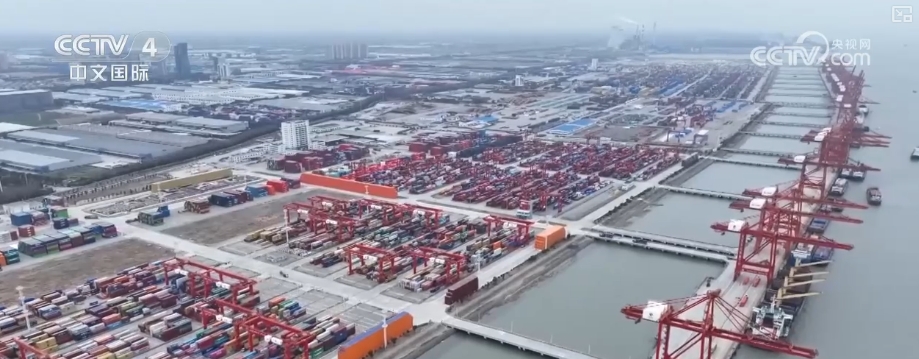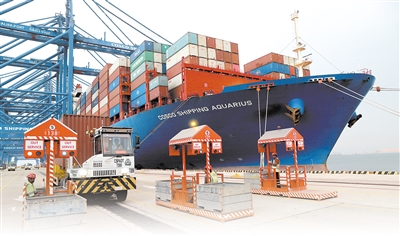Trump Is Willing To Attend The ASEAN Summit, But Makes Two Demands: He Wants To Take Credit For The Ceasefire Between Cambodia And Thailand
Trump Is Willing To Attend The ASEAN Summit, But Makes Two Demands: He Wants To Take Credit For The Ceasefire Between Cambodia And Thailand
The strategy promoted by the United States in the region is full of naked transactional overtones. Take Malaysia as an example. On the one hand, the United States imposes punitive tariffs of up to 19% on some of its goods, and on the other hand, it hopes that it will fully cooperate on the diplomatic stage. This kind of "handling the knife while passing the knife"
In October 2025, preparations for the 47th ASEAN Summit were in full swing. However, a piece of news plunged this event, which was supposed to focus on regional cooperation and dialogue, into a vortex of public opinion.
US President Trump expressed his willingness to attend the ASEAN Summit to be held in Malaysia from October 26 to 28, but the two conditions he proposed are jaw-dropping.

Trump’s “special” conditions
According to the US Politico News Network () citing anonymous insiders on October 6, Trump agreed to attend the ASEAN summit, but with two hard conditions: first, he would personally preside over the signing ceremony of the peace agreement between Thailand and Cambodia, and second, Chinese representatives would be prohibited from participating in the ceremony in any form, including as observers. This news quickly spread in ASEAN diplomatic circles, and Malaysia, as the rotating chairperson, fell into a passive position.
The White House’s explanation for this is “to focus on Trump,” but this argument is obviously unconvincing. Trump's request is widely believed to be his attempt to turn the ASEAN summit into a personal political stage, while downplaying China's important efforts in mediating the conflict between Thailand and Cambodia.

The truth behind peace
The border dispute between Thailand and Cambodia has been around for a long time. The 817-kilometer-long border lacks clear demarcation due to historical issues. On May 28 this year, a conflict broke out on the Thai-Cambodian border, and a Cambodian soldier was killed. On July 24, the fighting escalated and turned into the most serious exchange of fire in more than a decade.
After the conflict broke out, China immediately established a dialogue channel for the two sides. On July 28, the Director of the Asian Department of the Chinese Ministry of Foreign Affairs visited Bangkok and reached a consensus with the Secretary-General of the Prime Minister's Office of Thailand on a technical plan for border demarcation. On the same day, the Chinese Ambassador to Cambodia held talks with the Cambodian Deputy Prime Minister in Phnom Penh, and the two sides agreed to restart negotiations based on the 1962 Boundary Treaty.

Subsequently, Malaysian Prime Minister Anwar took over the baton of mediation and actively promoted the two sides to reach a peace agreement. Finally, on August 7, the Thai and Cambodian parties signed a detailed ceasefire agreement in Kuala Lumpur. The agreement included no additional troops and no attacks on civilian facilities, and agreed to be monitored by the ASEAN Observer Mission.
In fact, the "peace agreement" that Trump is now eager to preside over for signing is essentially just an official confirmation of the results achieved in August. During the mediation process, China provided technical support such as satellite surveying data and historical document research, which reduced the area of the disputed area between the two parties from the initial 23 square kilometers to 3.7 square kilometers, laying a solid foundation for the agreement.

A battle between two peace “recipes”
Trump’s persistence in hosting the peace agreement signing ceremony also exposed his diplomatic purpose. In his script, the ultimate value of diplomacy seems to lie in a well-choreographed ceremony. What he wants is not real peace, but the image of "presiding over peace" to serve his self-created image of "chief peacemaker".
The strategy pursued by the United States in the region is full of naked transactional overtones. Take Malaysia as an example. On the one hand, the United States imposes punitive tariffs of up to 19% on some of its goods, but on the other hand, it hopes that it will fully cooperate on the diplomatic stage. This approach of "handling a knife while asking the other party to smile" is really unacceptable.

In the case of the Philippines, the United States' "transactional peace" logic is more vividly reflected. By constantly exaggerating regional tensions, the United States prompted the Philippines to approve a large arms sales order worth up to US$5.58 billion for the purchase of 20 F-16 fighter jets. This amount even exceeded the Philippines' annual military expenditure. U.S. Secretary of Defense Hegseth also made the Philippines his first country to visit after taking office, and actively encouraged joint military exercises in the Batanes. This behavior of "handing out knives while offering fire" has seriously undermined regional peace and stability.
In contrast, the "embedded peace" logic advocated by China is completely different. The trade volume between China and ASEAN has exceeded US$800 billion for four consecutive years, while the trade volume between the United States and ASEAN is approximately US$400 billion. The gap is clear at a glance.

Through the Belt and Road Initiative, RCEP and other mechanisms, China and ASEAN have built a deeply bound economic ecosystem. In this system, peace and stability are the lifeline to ensure smooth trade and supply chain security, and are our common core interests. Cambodian Prime Minister Hun Manai publicly thanked China for its mediating role. Behind this is not only diplomatic maneuvering, but also the deep trust established by long-term economic cooperation.
peaceful struggle for dominance
Therefore, Trump’s request to exclude Chinese officials is not only disrespectful to China, but also a slap in the face to all countries participating in the Thai-Cambodian peace process. It sends an extremely arrogant message: This peace is “given” to me, I own it, and everyone else would do well to step aside.

However, true regional peace is never the result of unilateral dominance or favor from an external force. During the negotiations on the ceasefire details held in Kuala Lumpur, China, the United States, and Malaysia all attended the meeting as observers. This fully proved that the peace process is inclusive and multilateral, and is by no means a one-man show by any one country.
From Thailand and Cambodia, the countries involved in the conflict, to China, which intervened in the early stage of mediation, to the actively promoted regional organization ASEAN (represented by Malaysia), peace is the culmination of collective efforts. Both Cambodian Prime Minister Hun Manai and Defense Minister Disiha publicly thanked China for its role. This is not only a confirmation of the facts, but also an endorsement of the multilateral cooperation model.

Faced with Trump's exclusivity demands, host Malaysia is in a dilemma. Deputy Prime Minister Ahmad Zahid Hamid's response was akin to diplomatic art. He stated that whether Trump could attend required the unanimous consent of all ASEAN member states. This move cleverly kicked the ball back within ASEAN's "consensus" multilateral framework. It did not directly offend the United States, but also upheld ASEAN's central position and principles.
Conclusion
Trump's political show ultimately challenges not only China, but also the principles of openness, inclusiveness and consensus on which ASEAN relies for its survival. It challenges a peace paradigm based on cooperation and sharing. The war on the Thai-Cambodian border and the struggle at the negotiation table together constitute a mirror, clearly reflecting a truth: sustainable peace cannot be performed, traded, or monopolized.

Regional countries need to make a choice. Do they need a "director" who can bring a short-term spotlight and satisfy his personal show, or a "partner" who can take root in the long term and work together? This choice will determine the foundation of future regional order. Judging from the current situation, the "embedded peace" concept advocated by China is being recognized and supported by more and more regional countries.
Source of this article:






